
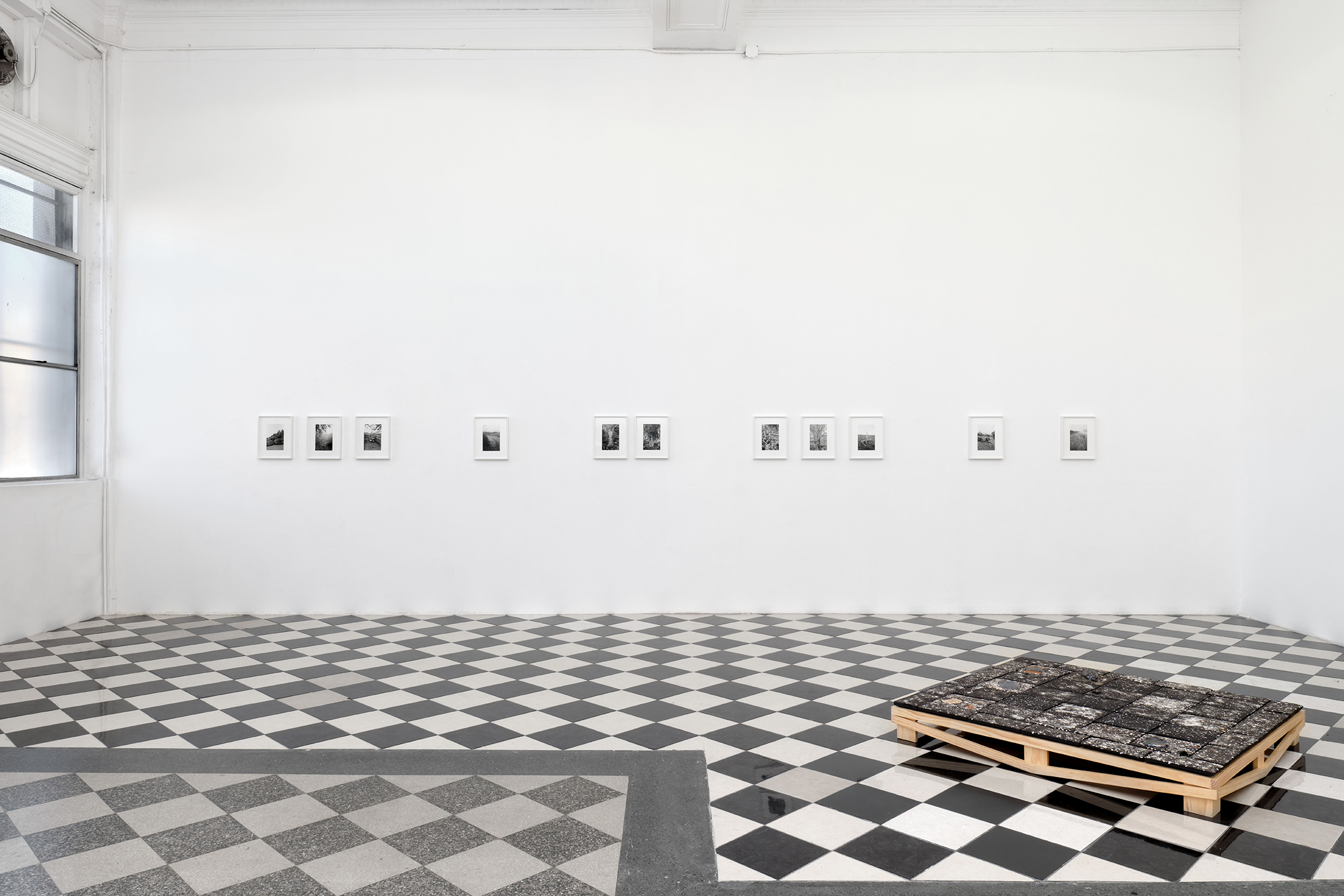

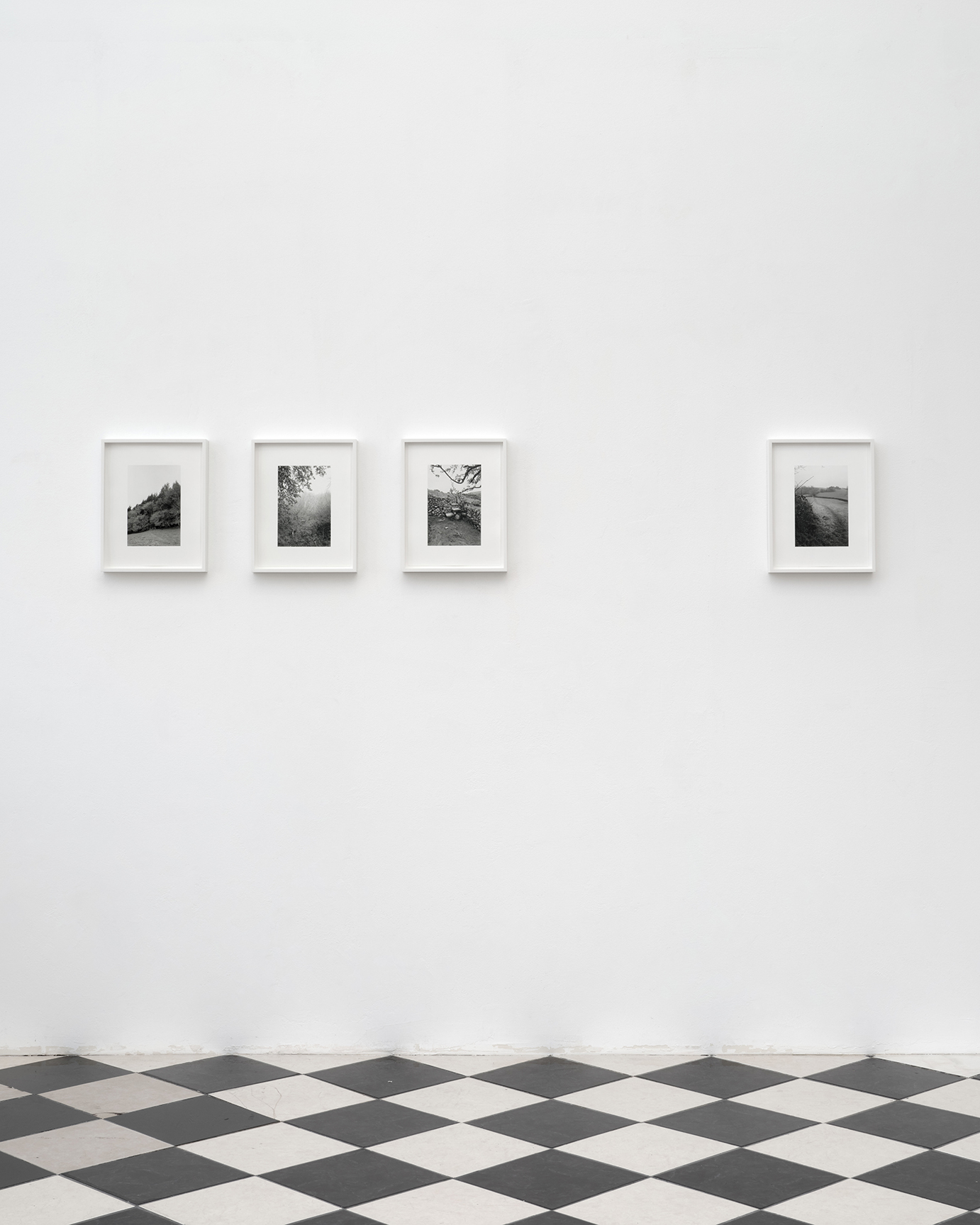





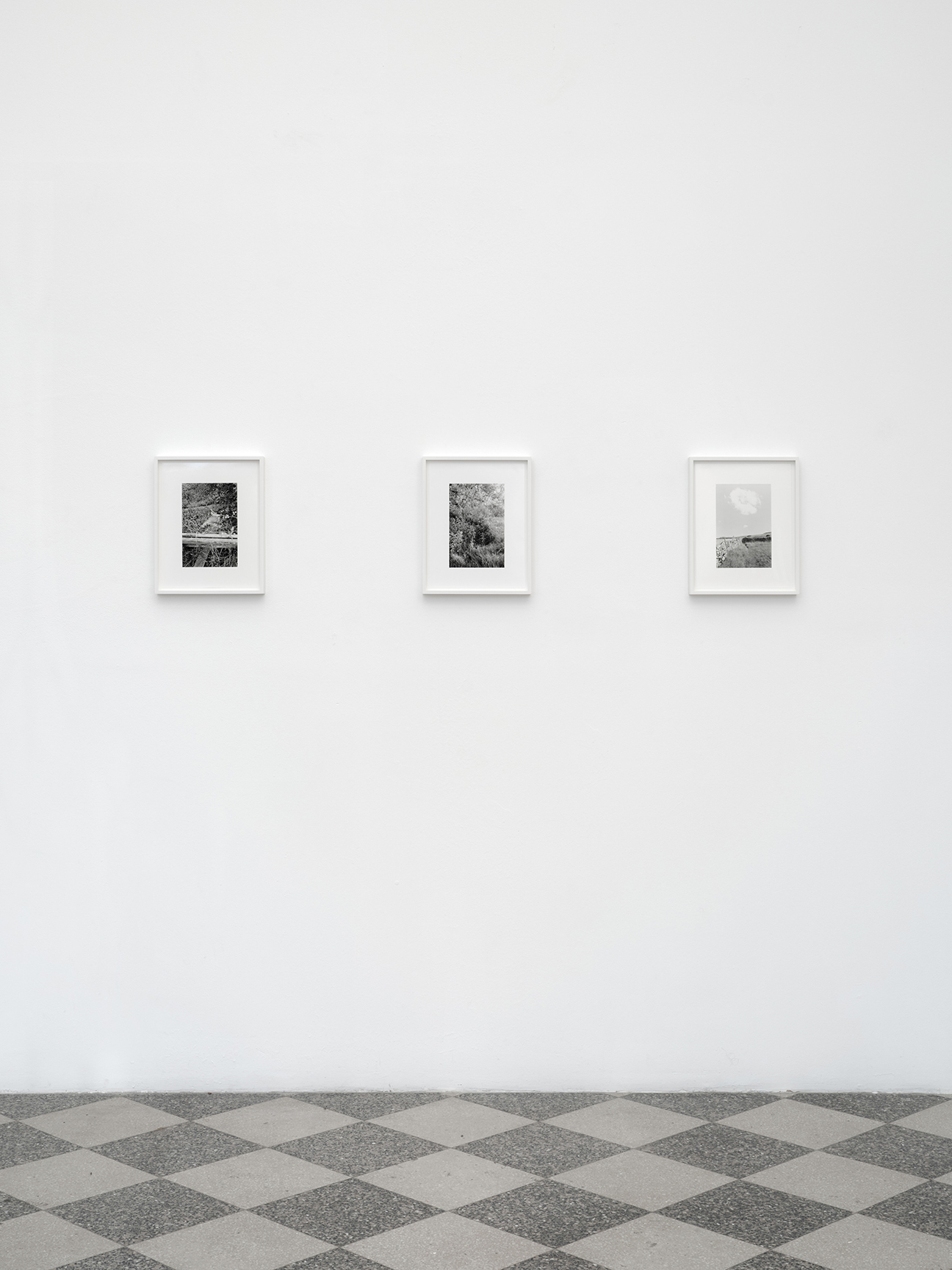
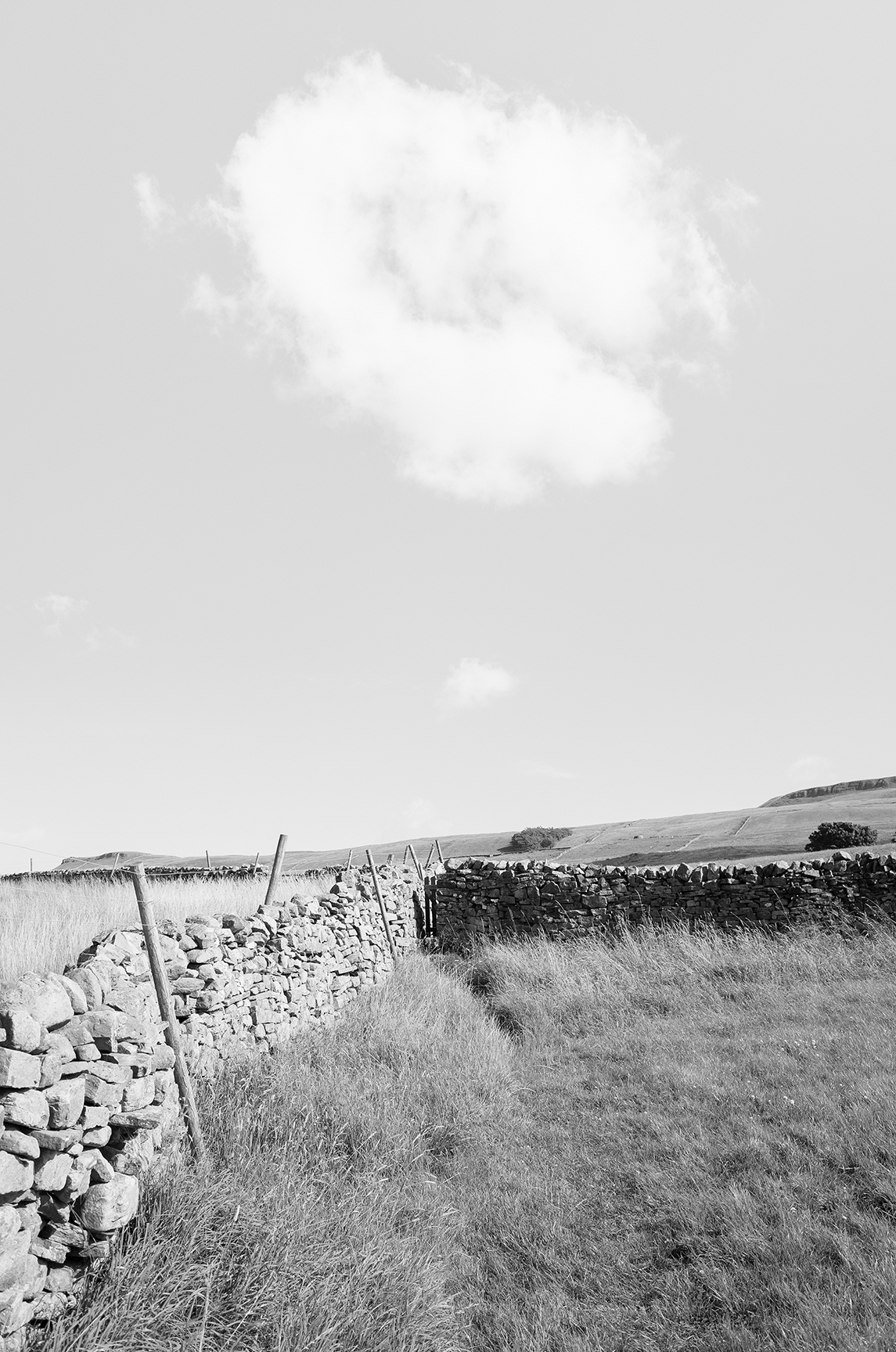
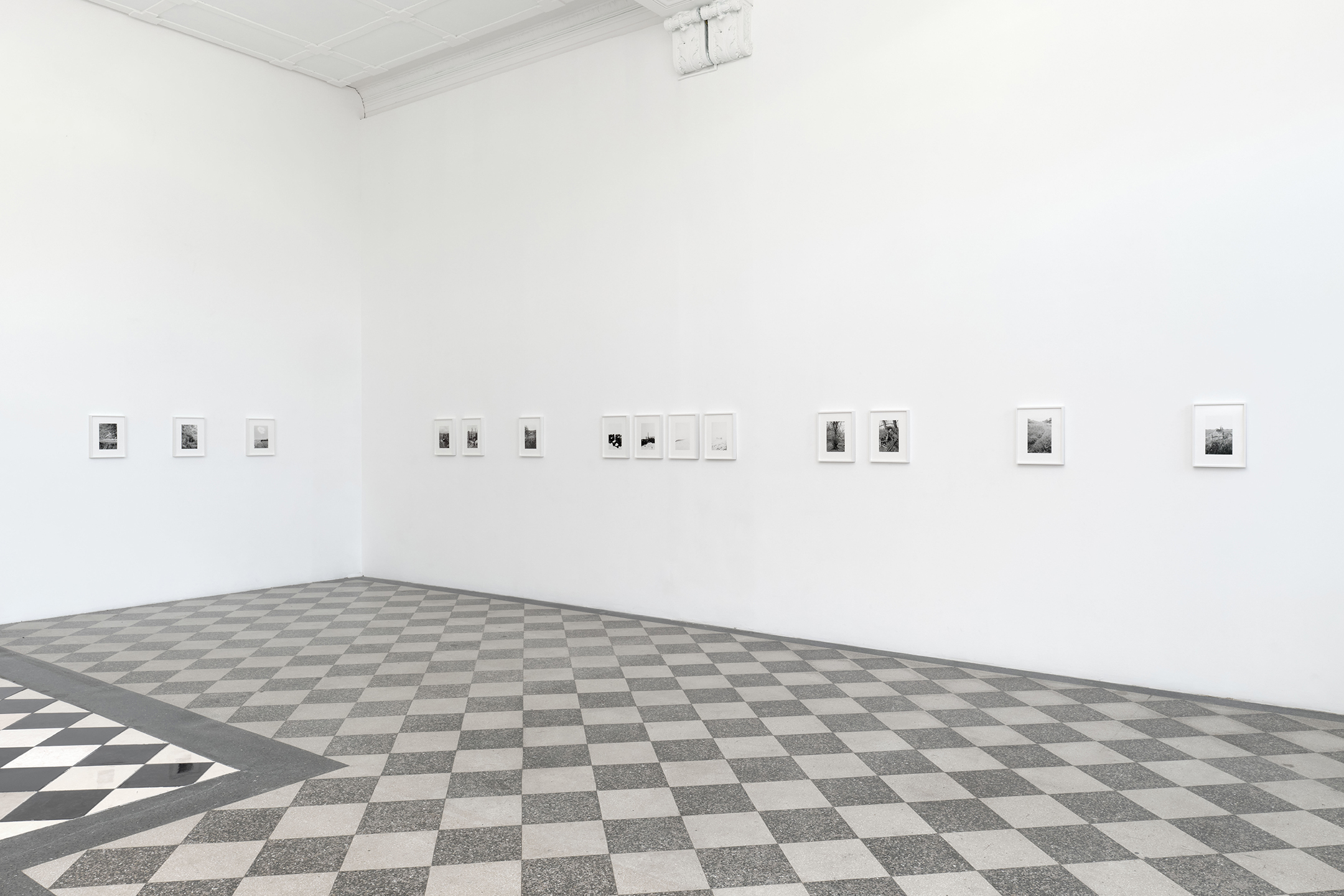
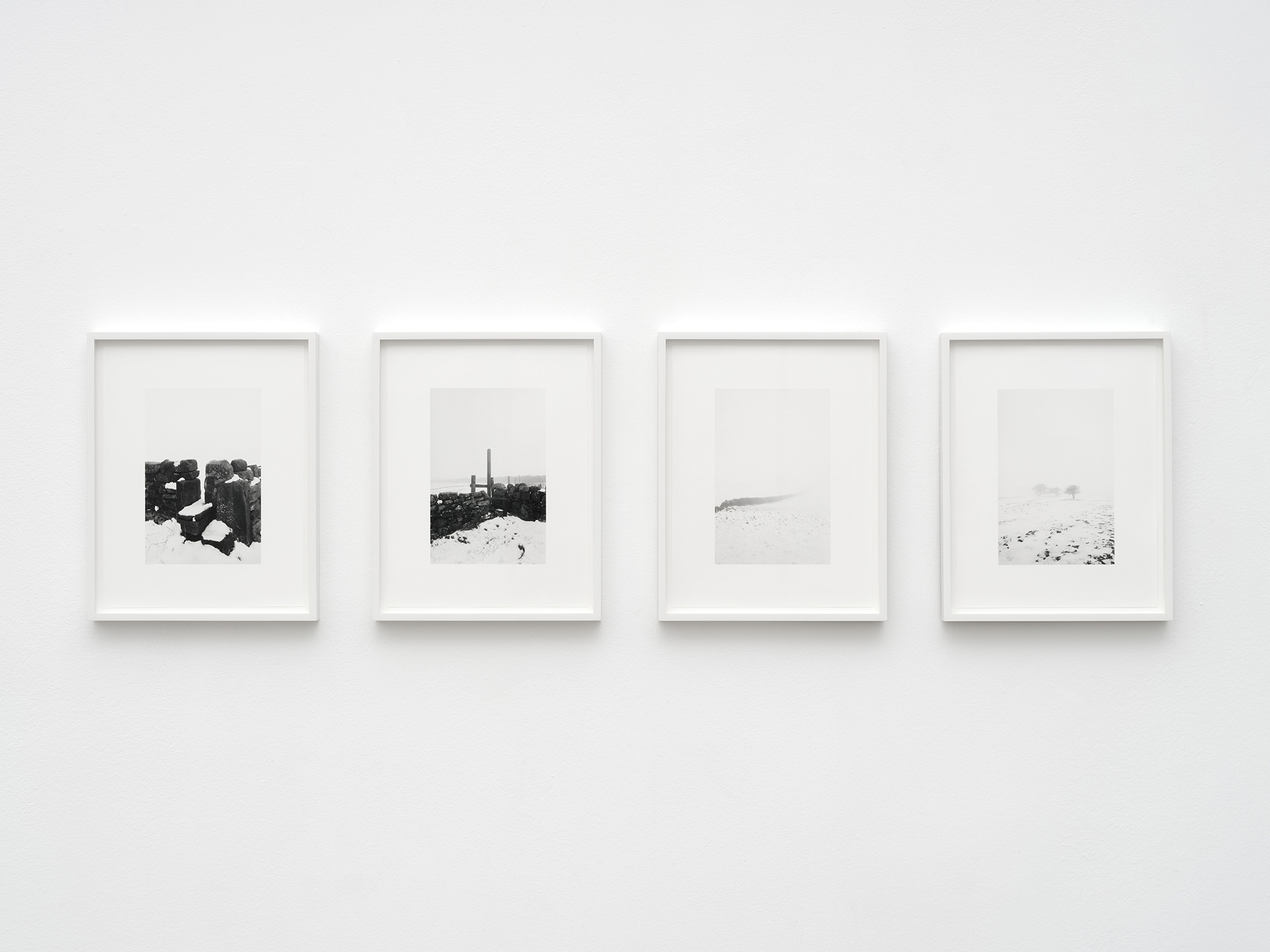

Kristina Kite Gallery presents Pitch, an exhibition of new works by Sam Contis and Kahlil Robert Irving, the first show for both artists in Los Angeles. Conceived by Contis and Irving, the exhibition brings together works centered around place, both urban and rural, and the traces of history and experience rooted within these environments. Both artists consider the layers of human activity that are embedded in the landscape, while thinking about how boundaries, visible and invisible, are constantly being negotiated.
The selection of photographs on view comes from Sam Contis’s new series Overpass, made over several years in northern England. Thousands of miles of public ‘rights of way’ exist in the U.K.—a vast network of footpaths and bridleways extending through privately owned land. Contis’s images focus on the stiles she encounters on these paths, the simple structures that offer a means of passage over walls and fences. Contis depicts these objects as found sculptural forms, representing points of access along boundary lines. Her black and white prints call to mind a long history of photographic typologies while also referencing 60’s and 70’s photographic documentation of performative and sculptural interventions in the landscape. Though we never see any figures, Contis’s images are full of living presence. She shows us, in sharp detail, worn tracks and boot prints, discarded beer cans, moss and lichen growing on ancient stones. Her images also reveal the tensions present in these spaces. In one photograph, a decaying stile is overcome by barbed wire and stinging nettles; a sign warns of a ‘private wood’. Elsewhere arrows beckon the traveler onward. It is an environment layered with many converging histories that, as Contis shows us in her cadenced sequences, ‘are live, shaping landscapes and affecting bodies in the present and determining what’s possible in the future.’
Kahlil Robert Irving’s floor sculpture, Stella: bye BLUE:STARlight [{bells ring for freedom}], depicts the street and the sky at the same time. Made from hand-pressed stoneware tiles that sit six inches off the floor on a wooden, palette-like structure, the texture of the speckled black ceramic simultaneously suggests asphalt and distant constellations. Embedded in the tiles are white ceramic fragments together with hand-made trompe l’oeil objects. The floor sculpture partly takes its name from Stella by Starlight, a jazz composition popularized by several mid-20th century musicians. Irving’s works are a constant re-collaging of recognizable elements—crushed can, cardboard, and scraps of newspaper—which recur as motifs in different pieces. These repeating references create an ongoing chronicle of the street, combining histories of hierarchy, commerce, and oppression. Irving uses sculpture to define space, in this case fashioning a ‘patch of earth’ that is a memorial to our contemporary moment.